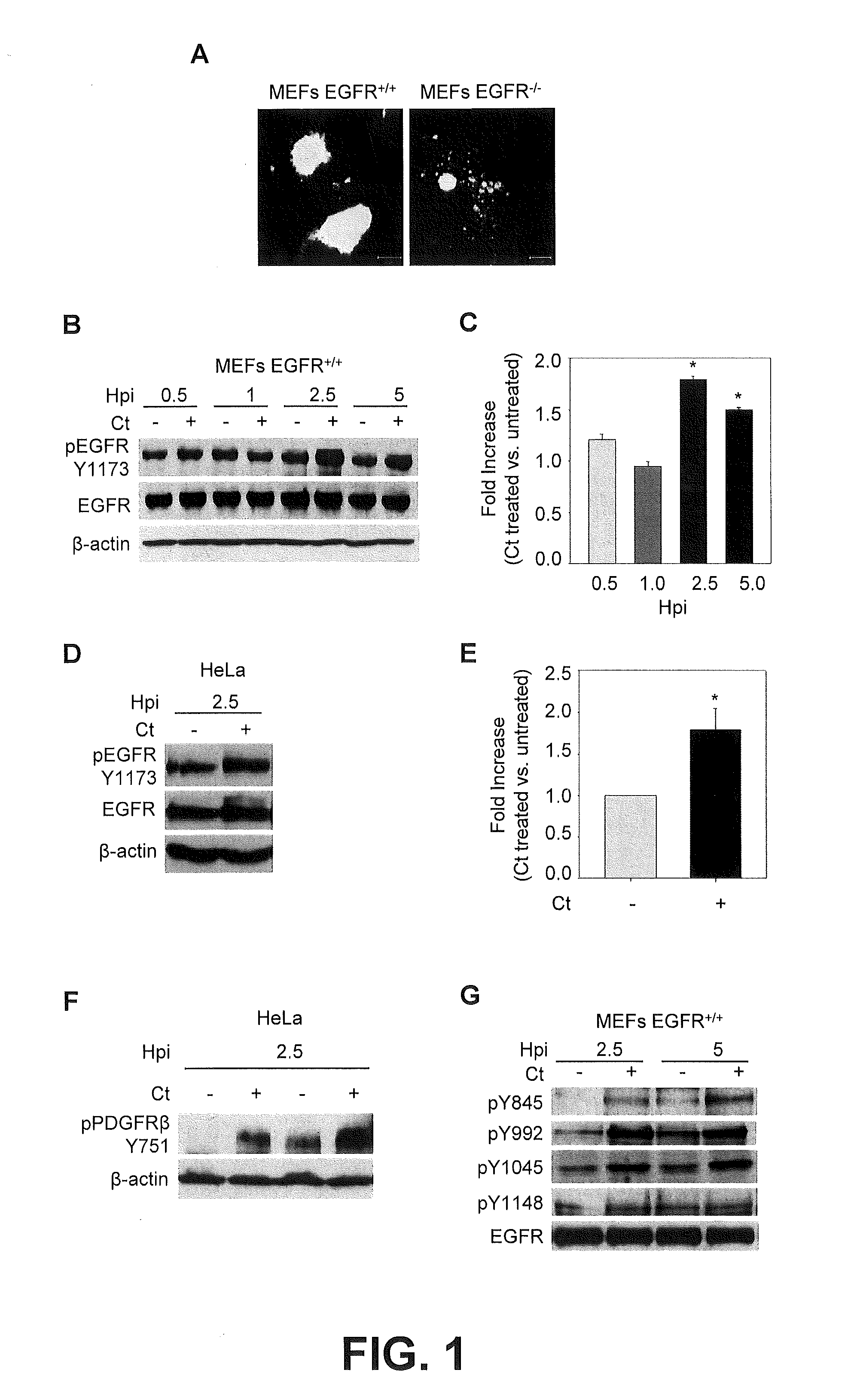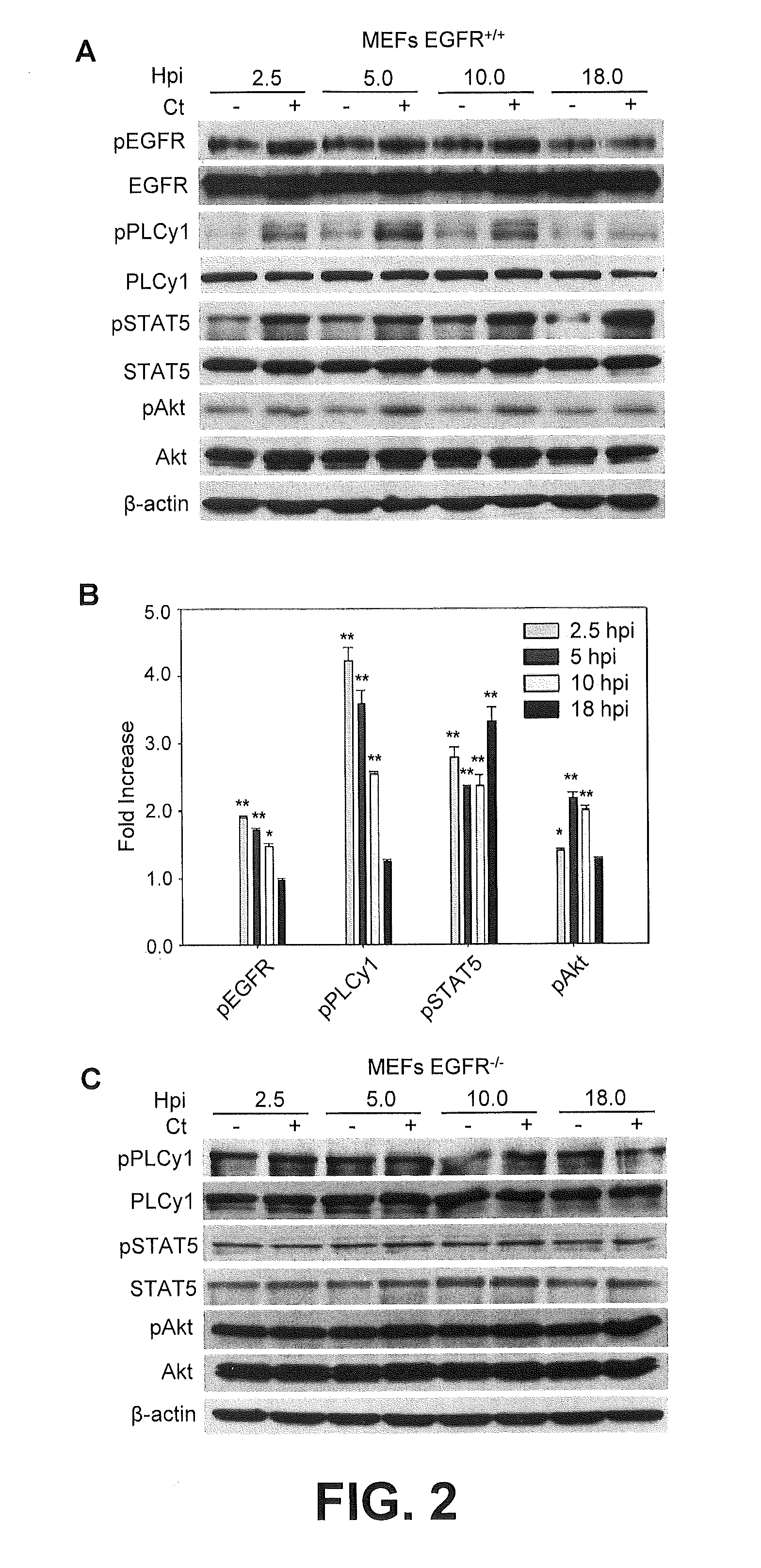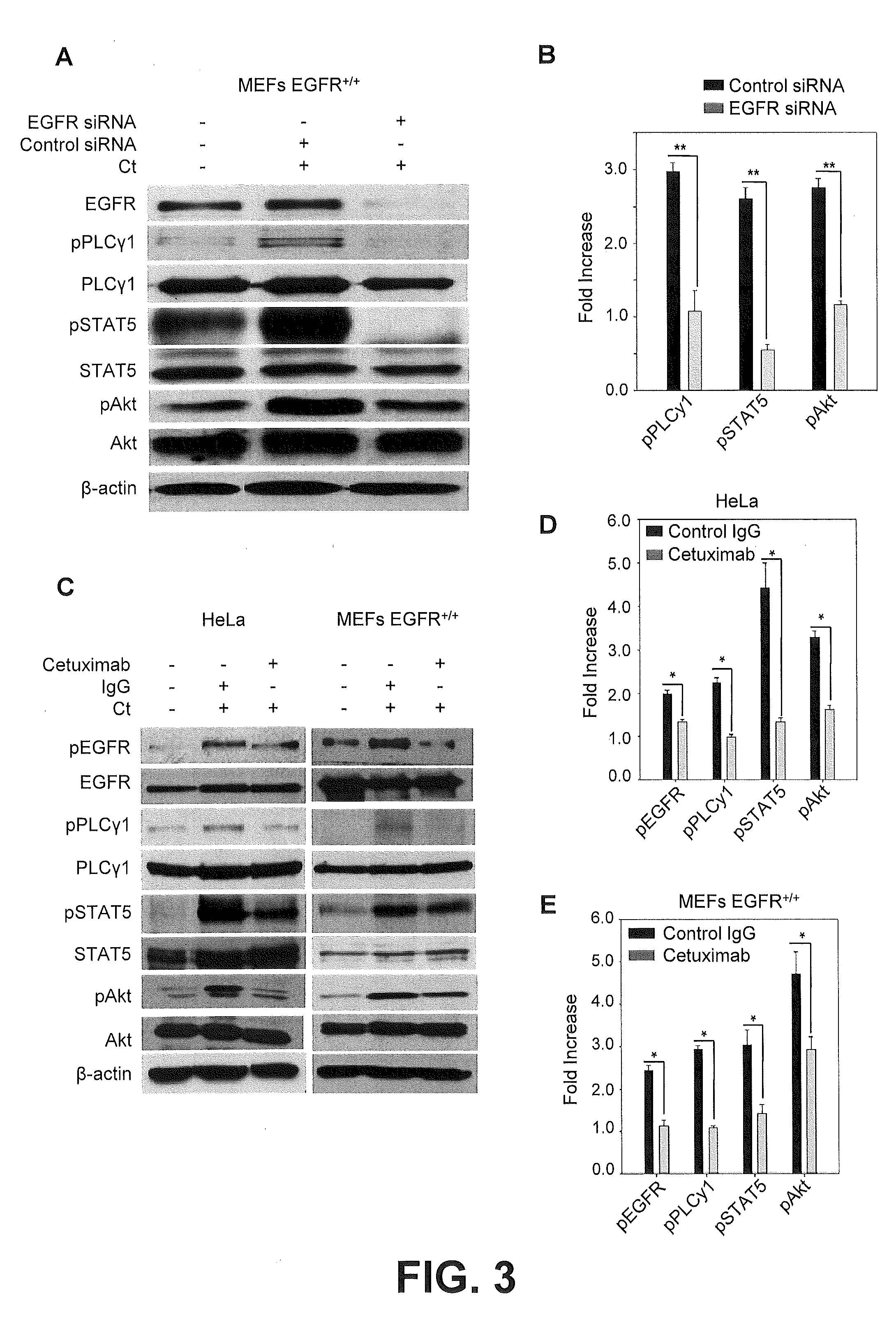Methods and Compositions for Treatment of Chlamydial Infection and Related Diseases and Disorders
a technology for chlamydia and related diseases, applied in the direction of drug compositions, immunoglobulins against animals/humans, peptides, etc., can solve the problems of inability to create an effective i>chlamydia /i>vaccine, inability to mechanism-based treatment of chlamydia /i>infections and chlamydia-related diseases, and inability to cure chlamydia-
- Summary
- Abstract
- Description
- Claims
- Application Information
AI Technical Summary
Benefits of technology
Problems solved by technology
Method used
Image
Examples
example 1
Activation of Epidermal Growth Factor (EGFR) is Required for Chlamydia trachomatis Development
[0113]Chlamydia trachomatis (C. trachomatis) is a clinically significant human pathogen and one of the leading causative agents of sexually transmitted diseases. As obligate intracellular bacteria, C. trachomatis has evolved strategies to redirect the host's signaling and resources for its own survival and propagation. Despite the clinical notoriety of Chlamydia infections, the molecular interactions between C. trachomatis and its host cell proteins remain elusive. In this study, we focused on the involvement of the host cell epidermal growth factor receptor (EGFR) in C. trachomatis attachment and development. A combination of molecular approaches, pharmacological agents and cell lines were used to demonstrate distinct functional requirements of EGFR in C. trachomatis infection. We show that C. trachomatis increases the phosphorylation of EGFR and of its downstream effectors PLCγ1, Akt and ...
example 2
Identification of Cancer Relevant Biomarkers of Infection Using Western Blot (WB) and Quantitative Mass Spectrometry (MS)
[0165]We initiated a series of targeted and discovery screening experiments to evaluate changes in protein, protein phosphorylation and protein oxidation in cells infected with C. trachomatis. Targeted analysis for a number of key signaling proteins is shown in FIG. 30. Important for this disclosure, the results revealed down-regulation of MKK4 at 12 and 24 hpi (hours post-infection) with C. trachomatis (FIG. 30). MKK4 is an important suppressor of metastasis. Down-regulation of MKK4 upon infection with C. trachomatis is significant for several reasons: i) it supports MKK4 as a potential biomarker of infection associated with unique developmental stages of C. trachomatis and cancer; ii) it opens opportunities for identifying MKK4-centered signaling networks that could be manipulated to prevent or combat chlamydial infections and cancer; and, iii) it could lead to ...
PUM
 Login to View More
Login to View More Abstract
Description
Claims
Application Information
 Login to View More
Login to View More - R&D
- Intellectual Property
- Life Sciences
- Materials
- Tech Scout
- Unparalleled Data Quality
- Higher Quality Content
- 60% Fewer Hallucinations
Browse by: Latest US Patents, China's latest patents, Technical Efficacy Thesaurus, Application Domain, Technology Topic, Popular Technical Reports.
© 2025 PatSnap. All rights reserved.Legal|Privacy policy|Modern Slavery Act Transparency Statement|Sitemap|About US| Contact US: help@patsnap.com



